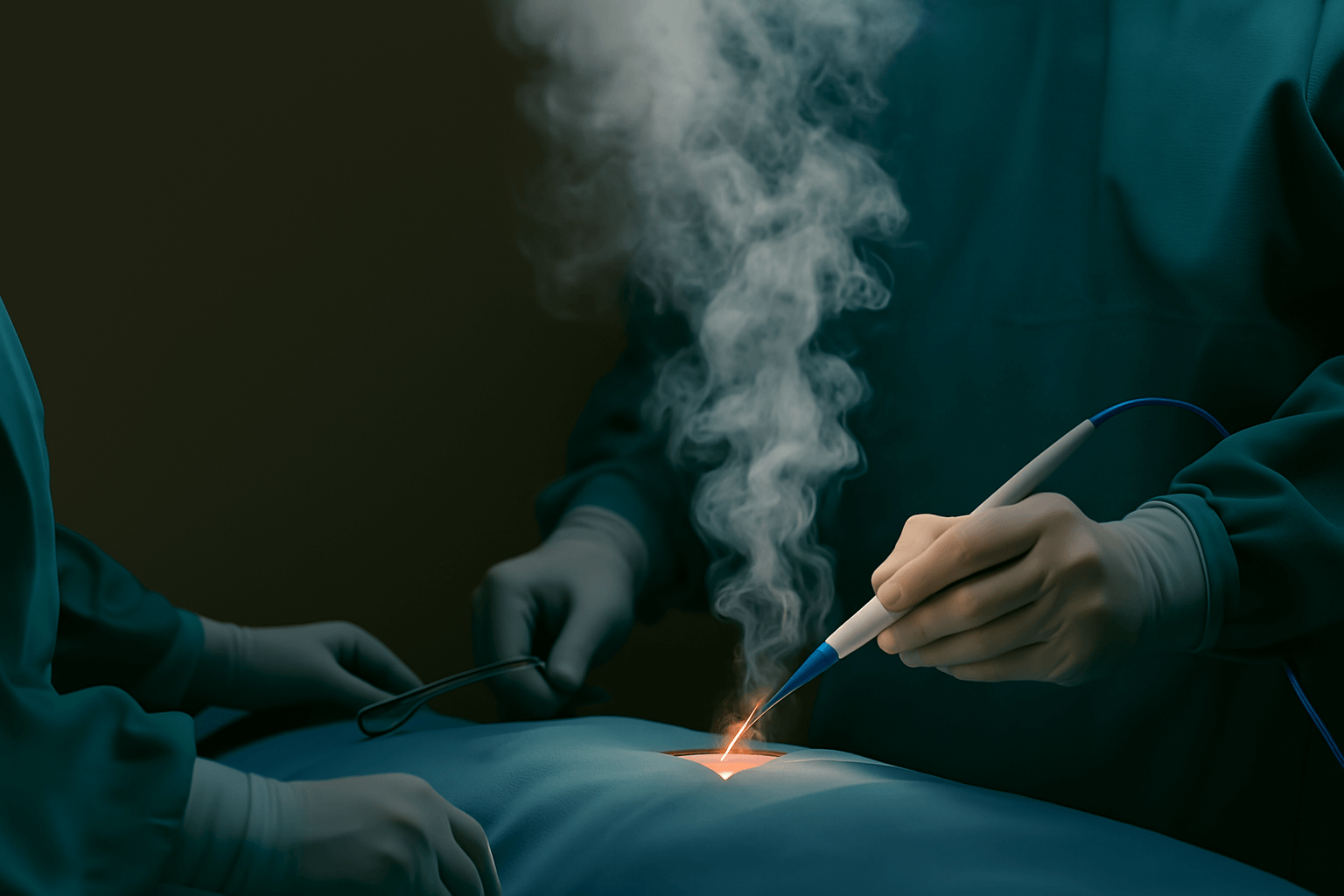Table of Contents
What Is Surgical Smoke?
In every operating room, there’s something most patients never even know exists: surgical smoke. It’s created when heat from lasers or electrocautery burns through tissue, producing a visible plume that contains far more than it appears.
Though it looks like harmless vapor, this smoke actually carries tiny particles, toxic chemicals, and even viruses. Over time, this exposure can quietly affect the health of every nurse, surgeon, and tech working near it.
What’s Really in Surgical Smoke?
It is made up of:
- Over 80 toxic chemicals (like benzene and formaldehyde)
- Ultra-fine particles that can enter deep into the lungs
- Viral DNA, including HPV
- Cellular debris and gases that irritate airways and eyes
Breathing it in, even briefly, can cause coughing, burning eyes, or sore throats. Long-term, it may lead to chronic health problems.
Health Risks of being exposed
The danger isn’t just theoretical. Daily exposure can lead to:
- Chronic bronchitis and asthma-like symptoms
- Increased risk of some cancers
- Eye irritation and headaches
- Potential transmission of viruses
Nurses and surgical staff often experience fatigue and throat discomfort after busy days. Over years, this adds up.
Why Surgical Smoke Is Often Overlooked?
Despite these dangers, many teams still overlook it because:
- Evacuators can be noisy or seem inconvenient
- Budgets for new equipment are tight
- It’s seen as “just part of surgery”
- Not every hospital enforces strong policies
But ignoring surgical smoke doesn’t make the risk disappear.
Reducing Surgical Smoke: What Works
Protecting staff doesn’t have to be complicated. Steps that make a difference include:
- Using local smoke evacuators right at the source
- Wearing proper masks (N95 or higher)
- Keeping suction near
- Educating everyone about risks and solutions
- Making smoke evacuation part of routine checks
Simple habits keep you from being expose
My Personal Story
When I started as a scrub nurse, I barely noticed surgical smoke. But after months of busy days, I developed headaches and a scratchy throat I couldn’t ignore.
Talking with colleagues, I found many had the same problem. That shared experience pushed us to advocate for better smoke evacuation — and over time, it changed our practice.
What Studies Show?
Research highlights why this matters:
- One gram of burnt tissue can produce smoke equal to several cigarettes
- Some viral particles can survive in the plume
- Long-term exposure raises the chance of respiratory issues
Surgical smoke isn’t harmless — science confirms what we feel.
Quick Checklist: Protect Yourself and Your Team
✅ Use smoke evacuation systems
✅ Keep suction close to the burn site
✅ Wear high-filtration masks
✅ Monitor for visible build-up
✅ Speak up if something doesn’t feel right
These habits lower surgical smoke exposure and protect everyone.
Why Hospitals Benefit Too?
Addressing surgical smoke isn’t just about staff safety. Hospitals see:
- Fewer sick days
- Higher staff morale
- Compliance with safety guidelines
- Better patient care through healthier teams
Investing in evacuation pays off in many ways.
The Power of Speaking Up
Challenging habits isn’t easy. But one nurse asking, “Are we evacuating the smoke?” can spark real change.
When team members support each other, it’s easier to protect everyone from surgical smoke.
Recap
- Surgical smoke comes from burning tissue in surgery
- It carries toxic chemicals, fine particles, and sometimes viruses
- Daily exposure puts staff health at risk
- Smoke evacuation, proper masks, and team awareness reduce harm
- Protecting staff is part of quality patient care
Looking Ahead: A Safer Future
Imagine ORs where:
- Every team member understands surgical smoke risks
- Evacuators run automatically
- Staff health is built into every procedure plan
Change starts with awareness — and a shared commitment to do better.
Insights from my Blog
You might want to read this
Join our Email List Today!
We’d love to stay in touch and keep you updated with the latest insights and resources!
- Stay informed with exclusive content and updates.
- Receive expert tips and valuable resources directly in your inbox.
- Be the first to know about new articles, events, and more!
Fill out the form to subscribe now and be part of our growing community!
Let’s keep the learning and excitement going!
Subscribe to my YOUTUBE Channel
If this post resonated with you, I also share calming visuals, quiet moments, and reflections on wellness over on my YouTube channel. You’re welcome to subscribe and join me there, whenever it feels right. Subscribe here
